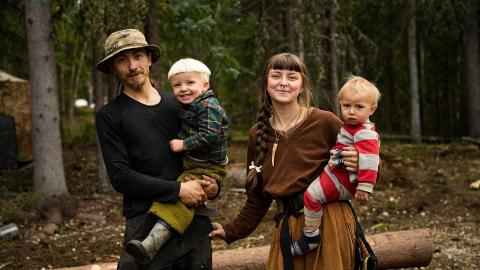Prehistoric to Colonisation
The inhabitants of this country are tawny coloured. Their food is confined to the flesh of seals, whales and gazelles, and the roots of herbs. They are dressed in skins, and wear sheaths over their virile members.
Journal of the First Voyage of Vasco Da Gama, 1797-1499
WAS OUR EARLIEST ANCESTOR SOUTH AFRICAN?
In 1998, the oldest complete fossil of a human skeleton, over three million years old, is found in South Africa. And there is evidence in that area of hunter-gatherer activity by Homo Sapiens from nearly 15,000 years before. The following millennia see the rise of the Iron Age and in the period the Europeans call the Middle Ages, the establishment of the Mapungubwe Kingdom; the largest kingdom of the subcontinent, its people trade gold and ivory with China, India and Egypt. The kingdom's rediscovery by archaeologists in the 1930s is kept quiet by the authorities who are keen to dismiss evidence of any 'civilisation' prior to the white man's arrival.
THE FIRST EUROPEANS LAND
In 1497, the Portuguese explorer, Vasco da Gama, becomes the first European to encounter South Africans. In his diary, he describes them as tawny-coloured...They are dressed in skins, and wear sheaths over their virile members. He is describing the Khoikhoi. They have lived in that region for over a thousand years. Da Gama believes them to be hunter gatherers but, in fact, theirs was a pastoralist existence, dependent on the tending of their roaming flocks of animals.
In 1652, Jan van Riebeeck, an administrator for the Dutch East India Company, lands at the Cape of Good Hope. What starts as the need to establish a farm for growing fresh fruit and vegetables, so that passing sailors could avoid scurvy, develops into effectively the first colonial settlement. Smallpox introduced by the Europeans initially devastates Khoikhoi numbers but it will be the Europeans farming and fencing off of grazing pastures that will finally end the Khoikhoi way of life.
The first slaves in South Africa are imported from India, Indonesia and Madagascar. They are used as labour on the expanding number of farms. The farmers are no longer directly employed by the Dutch East India Company, and instead freelance for the company. Their Dutch ranks are increased with French, German and Scandinavian emigrants. Intermarriage between these groups and between the indigenous people is common.
Did you know?
In 1994, whilst searching through a box of apparent animal fossils, paleoanthropologist Ronald J. Clarke identified several hominid bones. The bones had come from the Silberberg Grotto within the Sterkfontein cave system in South Africa. Due to the extremely small nature of these foot fragments, the bones were nicknamed Little Foot. When Dr Clarke discovered more foot bones from the same individual three years later, a search team was sent to the Grotto and within two days amazingly uncovered a complete skull and jaw and other limb bones. In 1998, this three million year old find was announced to the world and even to this day, Little Foot is still being painstakingly excavated.
















